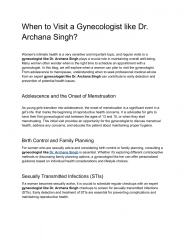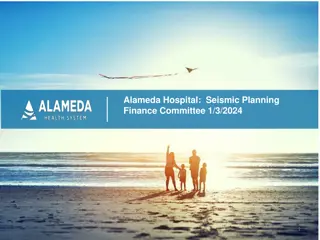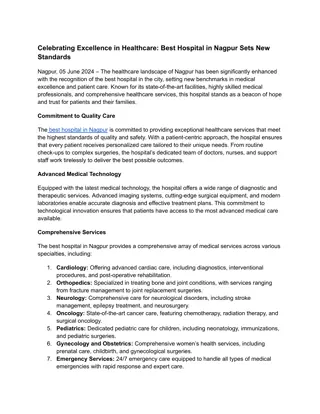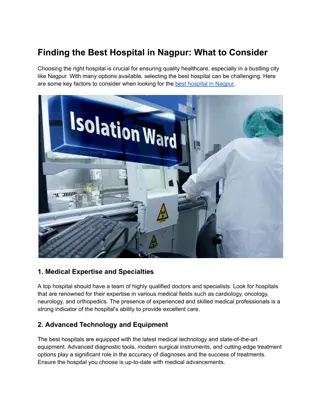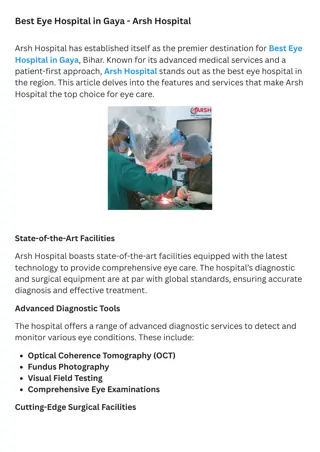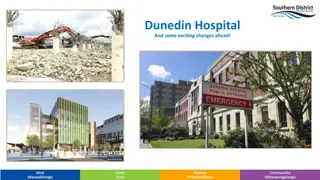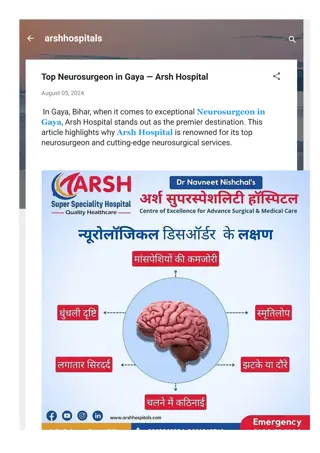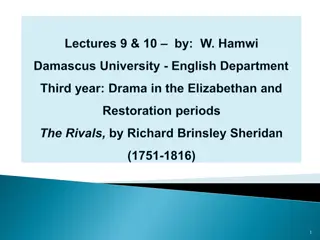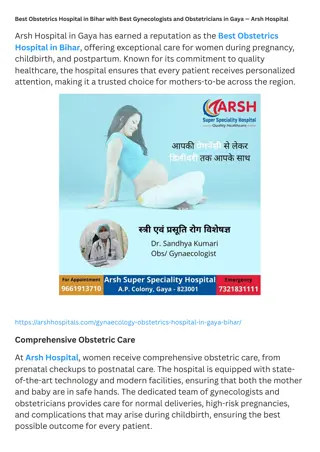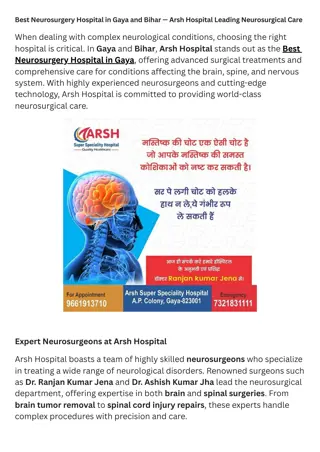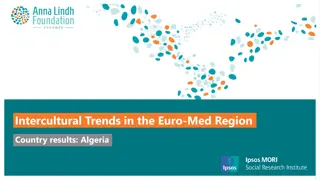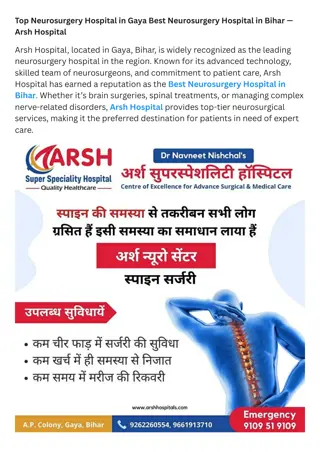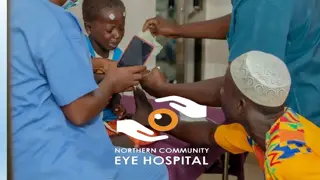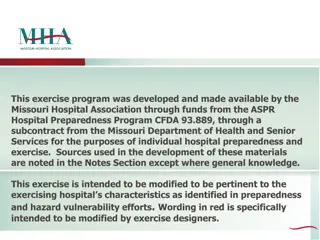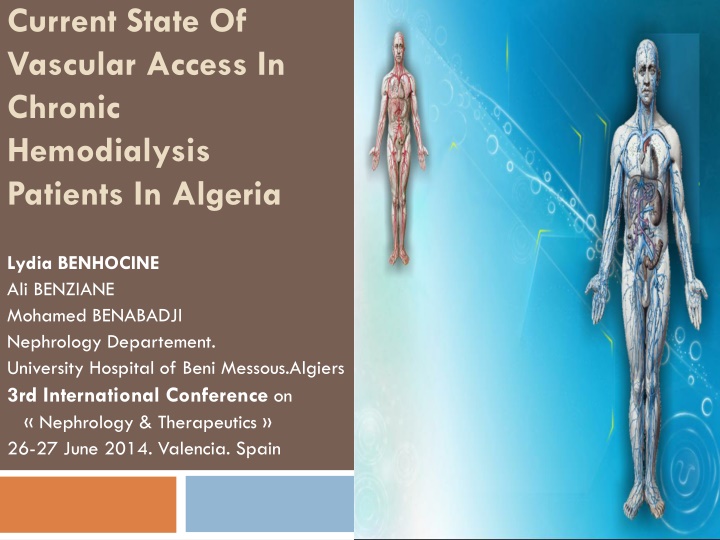
Vascular Access in Chronic Hemodialysis Patients in Algeria Study
This study focuses on the current state of vascular access in chronic hemodialysis patients in Algeria, aiming to improve patient survival and quality of vascular access. It includes statistics on ESRD prevalence, incidence, and types of vascular access used.
Uploaded on | 6 Views
Download Presentation

Please find below an Image/Link to download the presentation.
The content on the website is provided AS IS for your information and personal use only. It may not be sold, licensed, or shared on other websites without obtaining consent from the author. If you encounter any issues during the download, it is possible that the publisher has removed the file from their server.
You are allowed to download the files provided on this website for personal or commercial use, subject to the condition that they are used lawfully. All files are the property of their respective owners.
The content on the website is provided AS IS for your information and personal use only. It may not be sold, licensed, or shared on other websites without obtaining consent from the author.
E N D
Presentation Transcript
Current State Of Vascular Access In Chronic Hemodialysis Patients In Algeria Lydia BENHOCINE Ali BENZIANE Mohamed BENABADJI Nephrology Departement. University Hospital of Beni Messous.Algiers 3rd International Conference on Nephrology & Therapeutics 26-27 June 2014. Valencia. Spain
We believe that we can keep alive patients with uremia as long as the veins and arteries are in good condition. http://3.bp.blogspot.com/_is8BV0dqpSs/TLKTB-dfCyI/AAAAAAAAAEs/bRAImyMej9Y/s320/WillemJ_Kolff52.jpg Willem Kolff, 1944
In ALGERIA.. Population of 37.100 000 inhabitants. Prevalence of ESRD 350 PMP Incidence of 94 PMP (3500 New cases/year) 17416 ESRD Patients 15.232 Patients on HD : 274 Hemodialysis center - 154 Public Centers 8013 patients - 120 Private Centers 7219 patients 430 patients on Peritoneal Dialysis (90 Infants) 100 Renal Transplantation / year ( 3% ) ESRD: end stage renal disease HD :hemodialysis
Despite all the progress made in the techniques of renal replacement therapy, survival on hemodialysis (HD) depends in a large part on the quality of vascular access. Vascular access and its eventual complications remains the leading cause of morbidity in hemodialysis patients.
Objective of the study 1. identify what type of vascular access for Hemodialysis is made on first intention? 2. realize a clinical expertise on the vascular access for dialysis in patients after a certain period of HD.
Patients and Method : Prospective study. Multicenter Datas collated on 60 days (data collection and statistical study) 1029 chronic Hemodialysis patients. 21 Hemodialysis centers (public and private center) located in the capital city of Algiers and neighboring towns. (Tizi ouzou.Tipaza.Ain Defla.Medea.Msila.El-Eulma..)
Questionnaire sent to the treating Nephrologist Sex Age Origin Initial Neph Diabete HTA other Path. Date of 1st HD Numb Jug Cath Numb Fem Cath Numb Tunne led Cath Num Gore- tex Numb AVF AVF life span Proxi mal/d istal AVF Cause of no functi oning AVF Current state of vessels
Gender Female 53% Male 47% Sex Ratio = 1.12
Age Extremes ages : 13 -94 yearss 30% 26% 25% 20% 17% 17,5% 14% 15% 11% 10% 10% 5% 2.80% 1,7% 0% 0% 70-79 80 years > 0-9 years 20-29 30-39 40-49 50-59 60-69 10-19
Distribution by age /gender Male Female 48 48.5 49 49.5 50 50.5 51 51.5 52 years
Initial Nephropathy 13% 22% Diabet Mellitus Hypertension Indeterm CGN Uro. Neph Heridit.Neph Others 28% 25%
Life Span On HD 60% 51% 50% 40% 30% 21% 20% 20% 6% 10% 2% 0% < 1 year 1-5 years 6-10 years 11-15 years > 16 years
Life span on HD 8% 71% 21% < 5 years 5-10 years >10 years
First access for HD was 17% 40% AVF Jug Cath Fem Cath Tunneled Cath 42%
First AVF was 55% 45% Distal Proximal
Total of AVF Vs Life span on HD 0- 5 years 6 - 10 years 11 - 15 years > 15 years 01 AVF 557 patients 223 Patients 69 Patients 19 Patients 2 AVF 53 10 8 4 3 AVF 16 8 2 3 4 AVF 9 3 3 4 5 AVF 5 4 3 6 Tunneled Cath 2 8 5 5 TOTAL 642 patients 256 patients 90 Patients 41 Patients
Clinical evaluation of vascular access for HD (less than 10 years on HD ) 16% 84% preserved consumed
Comments : .Sex Ratio was identical .Relatively young population (40-60 years) .Percentage of undetrmined nephropathy remains eleveted. .Percentages of Diabetic and Hypertensive Nephropathies join International datas.
Comments : .Central Catheter remains the leading access for HD. (Despite 40% AVF on first intention Follow-up of uremic patients before ESRD) .1 Patient/2 : First AVF Proximal than Distal .1patient /5 has a Poor Vascular capital within 10 years of dialysis.
CONCLUSION Vascular Capital of hemodialysis patients is VITAL. Great interest to preserve it preciously : Education of uremic patients and nursing staff. Careful assessment of where anastomosis should be performed using radiological investigation if necessary. (Distal>>Proximal) Regular radiological monitoring of the vascular access. Multidisciplinary planning seems essential to achieve this goal and thus improve the survival of patients on chronic hemodialysis.
Acknowledgment : .Dr Bahamida,Dr Mazouni, Dr Rezzak.,Dr lechehab et Nadia.Beni Messous Hospital. .Dr Labou,Dr Chachoua et aux medecins g n ralistes de l EPH Kolea. .Dr Tayar Clinique du rein .Cheraga .Dr Bedja et Karim. Clinique Ibtissama. Dely Brahim .Dr Chaimi.Dr Zeghlache Clinique Hydra .Dr Moualek. Pr Rayane clinique Baraki .Dr Bridja et Hocine.Clinique bonne sant . Belcourt .Dr Hamiche Clinique hemodial Larbaa. .Dr Oussalah. Dr Badaoui. Pr Seba.Tizi Ouzou university hospital .Dr Slimani.EPH Sidi Aissa. .Dr Tafoukt . EPH El-Eulma. .Dr Belamri.CHU Thenia. Hemodialysis center of khemis khechna. .Dr Belhaoua EPH Ain defla .Dr Gouceme.Dr Hammadouche. Hemodialysis center of Hadjout.cherchell .Dr Dif. EPH berouaghia .Dr Mahmoudi.Private hemodialysis center of Tizi Ouzou

